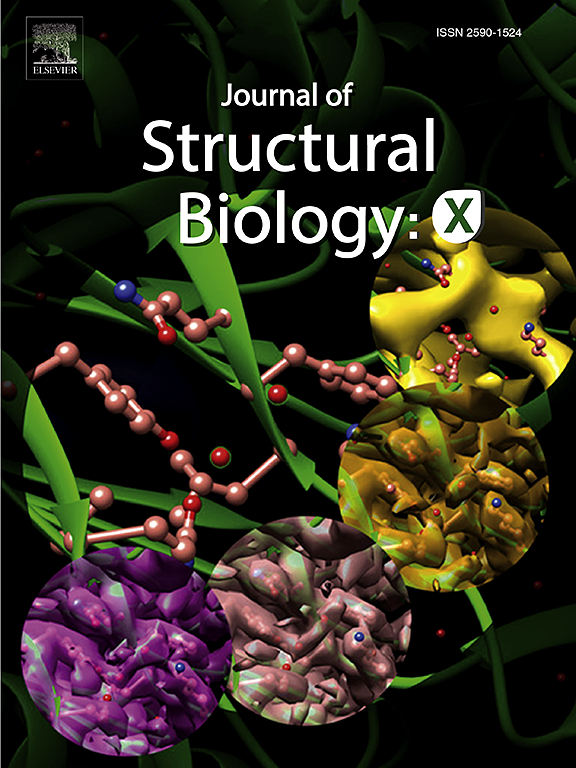Deletion within ameloblastin multitargeting domain reduces its interaction with artificial cell membrane
IF 2.7
3区 生物学
Q3 BIOCHEMISTRY & MOLECULAR BIOLOGY
引用次数: 0
Abstract
In human, mutations in the gene encoding the enamel matrix protein ameloblastin (Ambn) have been identified in cases of amelogenesis imperfecta. In mouse models, perturbations in the Ambn gene have caused loss of enamel and dramatic disruptions in enamel-making ameloblast cell function. Critical roles for Ambn in ameloblast cell signaling and polarization as well as adhesion to the nascent enamel matrix have been supported. Recently, we have identified a multitargeting domain (MTD) in Ambn that interacts with cell membrane, with the majority enamel matrix protein amelogenin, and with itself. This domain includes an amphipathic helix (AH) motif that directly interacts with cell membrane. In this study, we analyzed the sequence of the MTD for evolutionary conservation and found high conservation among mammals within the MTD and particularly within the AH motif. We computationally predicted that the AH motif lost its hydrophobic moment upon deleting hydrophobic but not hydrophilic residues from the motif. Furthermore, we rationally designed peptides that encompassed the Ambn MTD and contained deletions of largely hydrophobic or hydrophilic stretches of residues. To assess their AH-forming and membrane-binding abilities, we combined those peptides with synthetic phospholipid membrane vesicles and performed circular dichroism, membrane leakage, and vesicle clearance measurements. Circular dichroism showed retention of α-helix formation in all peptides except the one with the largest deletion of eleven amino acids including seven that were hydrophobic. This same peptide variant failed to cause leakage or clearance of synthetic membranes, while smaller deletions yielded intermediate membrane interaction as measured by leakage and clearance assays. Our data revealed that deletion of key hydrophobic residues from the AH leads to the most dramatic loss of Ambn–membrane interaction. Pinpointing roles of residues within the MTD has important implications for the multifunctionality of Ambn.

缺失母细胞蛋白多靶向结构域会降低其与人工细胞膜的相互作用。
在人类的成釉细胞发育不全症病例中,发现了编码釉质基质蛋白釉母细胞蛋白(Ambn)的基因突变。在小鼠模型中,Ambn基因的扰乱导致了釉质的丧失和釉质形成釉母细胞功能的显著紊乱。Ambn在釉母细胞信号转导和极化以及粘附到新生釉基质中的关键作用已得到证实。最近,我们在 Ambn 中发现了一个多靶向结构域 (MTD),该结构域可与细胞膜、大多数釉质基质蛋白 amelogenin 以及其自身相互作用。该结构域包括一个直接与细胞膜相互作用的两性螺旋(AH)基序。在这项研究中,我们分析了 MTD 的进化保守性序列,发现哺乳动物之间 MTD 的保守性很高,尤其是 AH 主题。我们通过计算预测,当删除 AH 主题中的疏水残基而非亲水残基时,AH 主题将失去其疏水力矩。此外,我们还合理地设计了包含 Ambn MTD 的肽段,并删除了大部分疏水或亲水残基。为了评估它们的AH形成和膜结合能力,我们将这些肽与合成磷脂膜囊泡结合,并进行了圆二色性、膜渗漏和囊泡清除测量。圆二色性结果显示,所有多肽都保留了α-螺旋的形成,只有一种多肽缺失最多,缺失了 11 个氨基酸,其中包括 7 个疏水氨基酸。同样的多肽变体未能导致合成膜的渗漏或清除,而较小的缺失则通过渗漏和清除测定产生了中等程度的膜相互作用。我们的数据显示,从 AH 中删除关键的疏水残基会导致 Ambn 与膜相互作用的最大损失。确定 MTD 中残基的作用对 Ambn 的多功能性具有重要意义。
本文章由计算机程序翻译,如有差异,请以英文原文为准。
求助全文
约1分钟内获得全文
求助全文
来源期刊

Journal of structural biology
生物-生化与分子生物学
CiteScore
6.30
自引率
3.30%
发文量
88
审稿时长
65 days
期刊介绍:
Journal of Structural Biology (JSB) has an open access mirror journal, the Journal of Structural Biology: X (JSBX), sharing the same aims and scope, editorial team, submission system and rigorous peer review. Since both journals share the same editorial system, you may submit your manuscript via either journal homepage. You will be prompted during submission (and revision) to choose in which to publish your article. The editors and reviewers are not aware of the choice you made until the article has been published online. JSB and JSBX publish papers dealing with the structural analysis of living material at every level of organization by all methods that lead to an understanding of biological function in terms of molecular and supermolecular structure.
Techniques covered include:
• Light microscopy including confocal microscopy
• All types of electron microscopy
• X-ray diffraction
• Nuclear magnetic resonance
• Scanning force microscopy, scanning probe microscopy, and tunneling microscopy
• Digital image processing
• Computational insights into structure
 求助内容:
求助内容: 应助结果提醒方式:
应助结果提醒方式:


